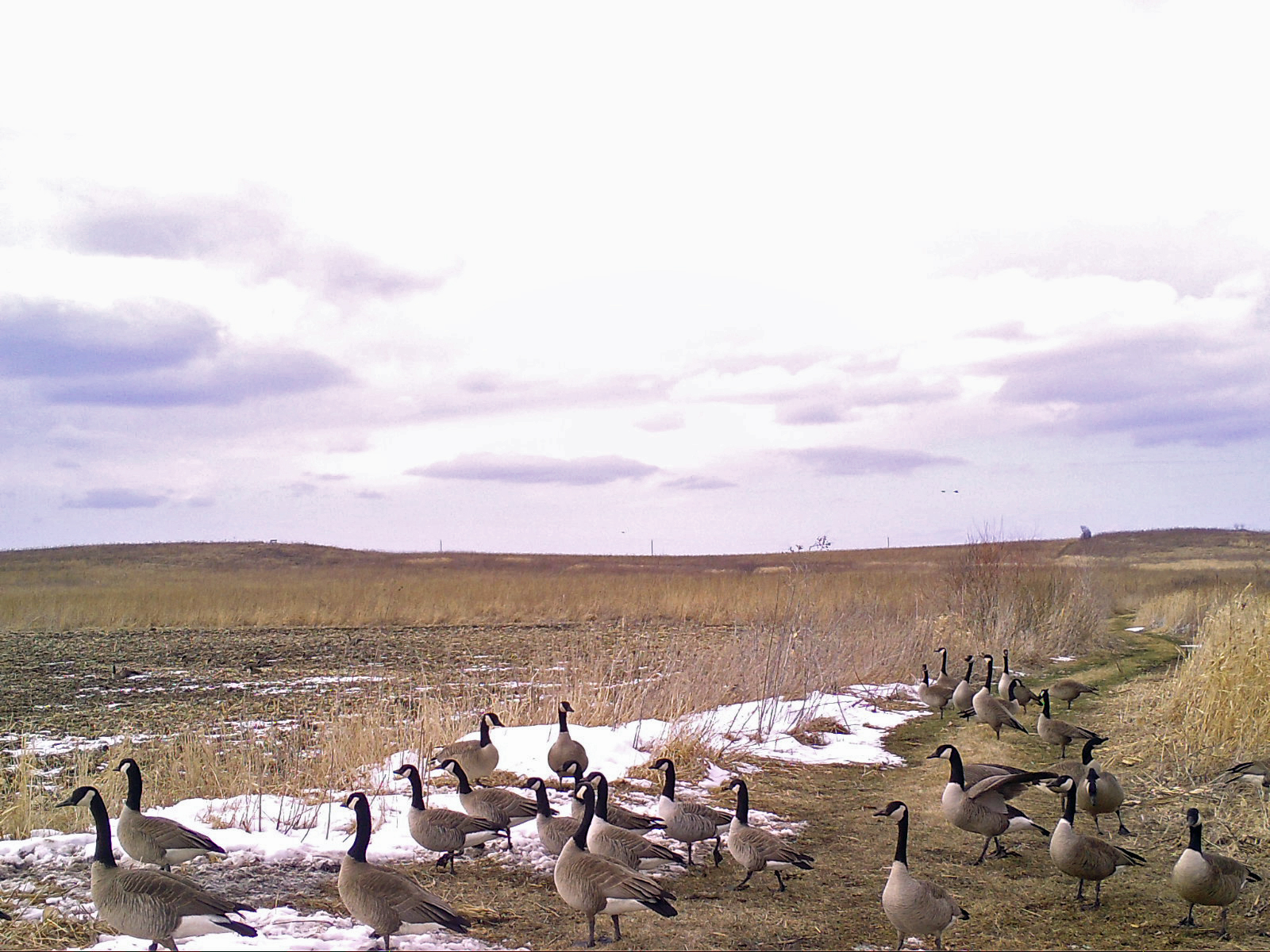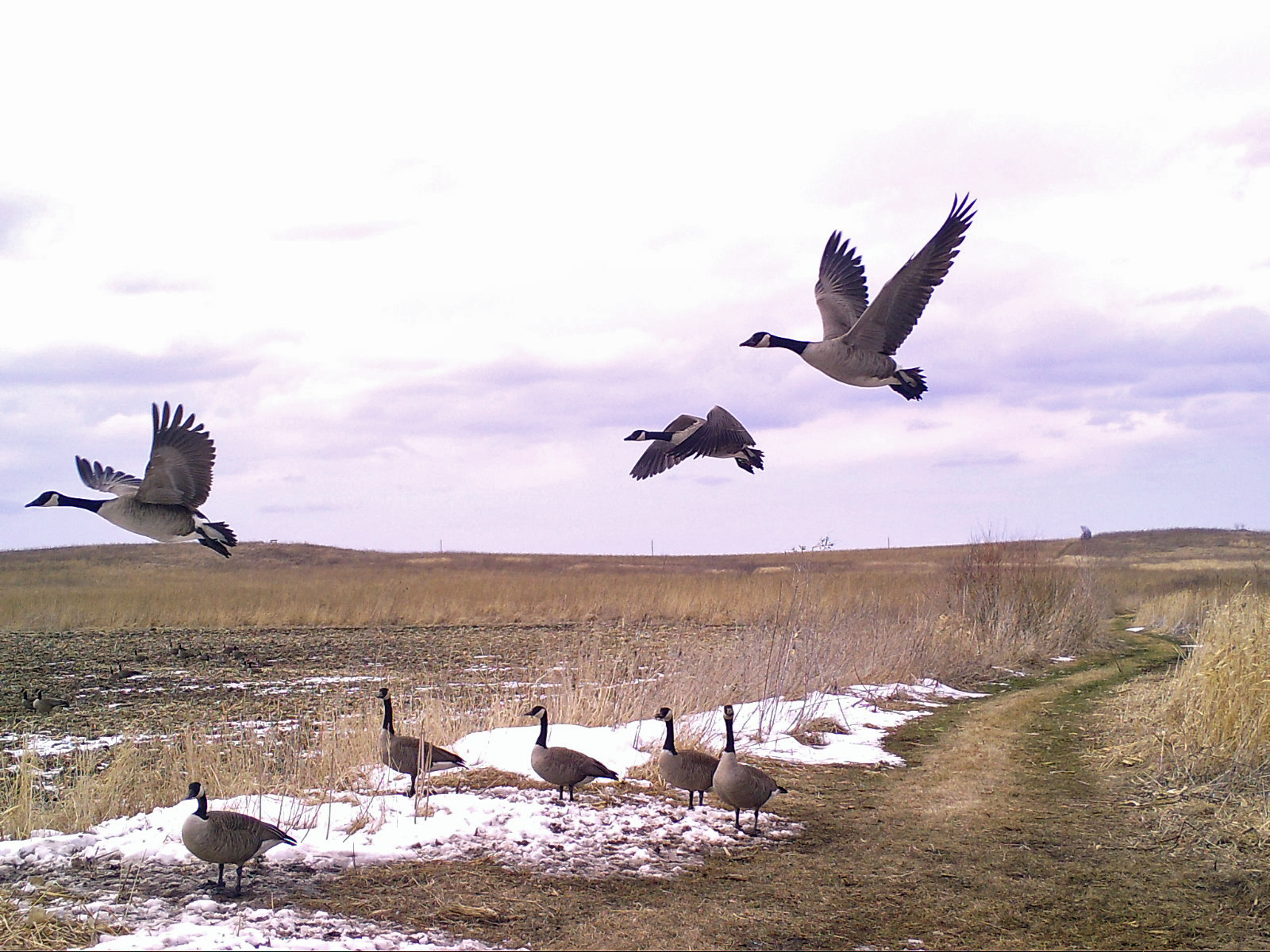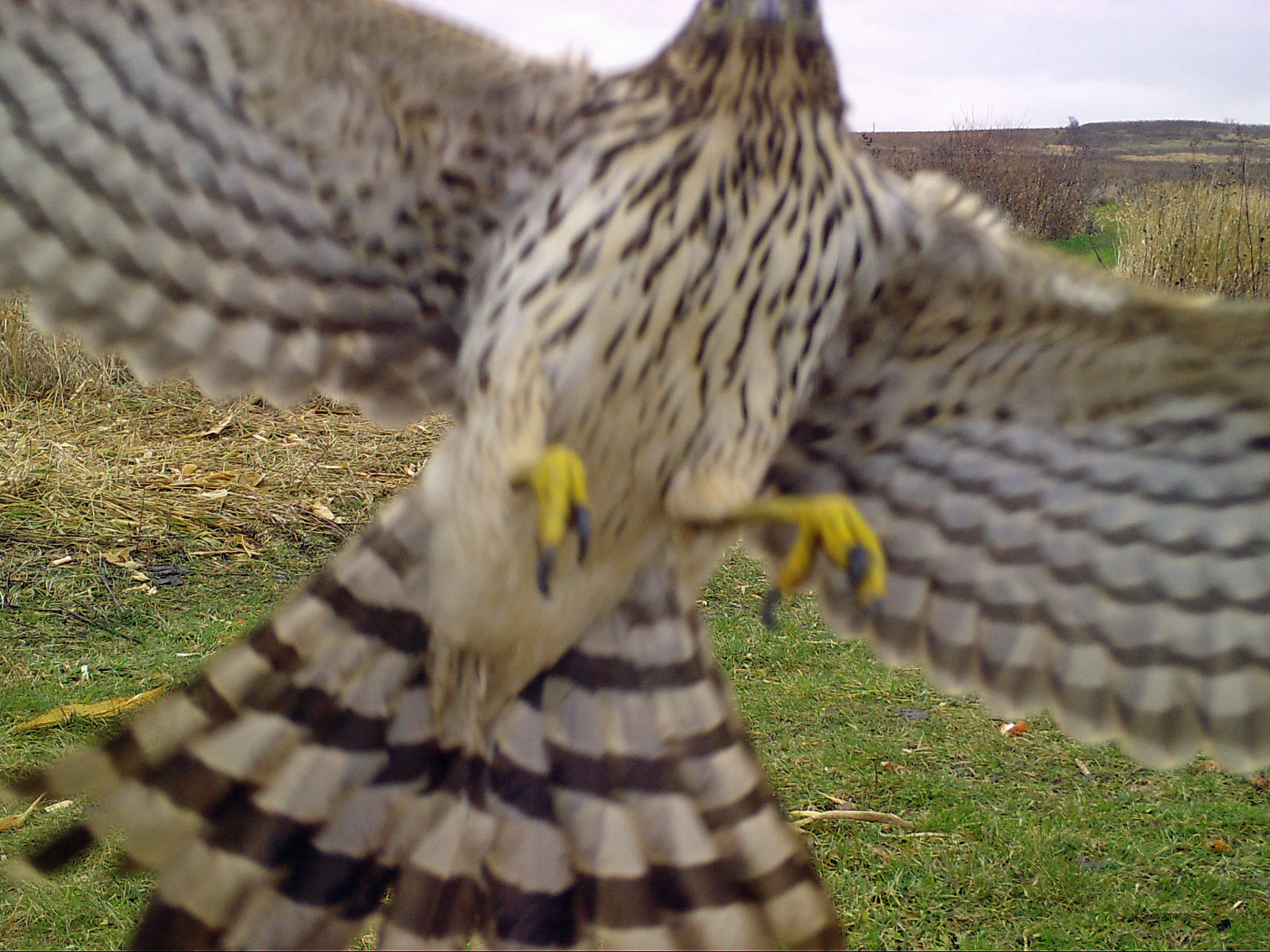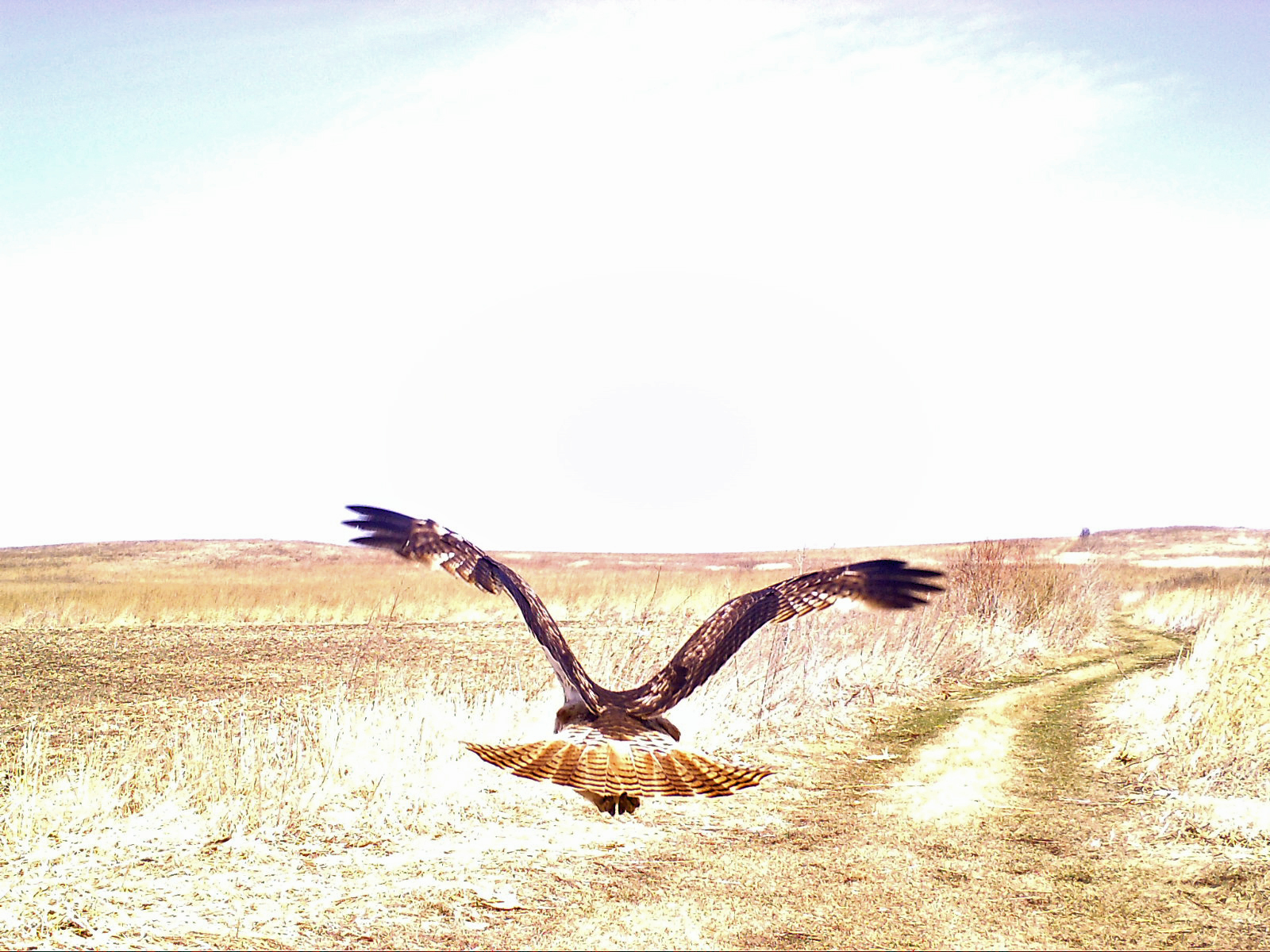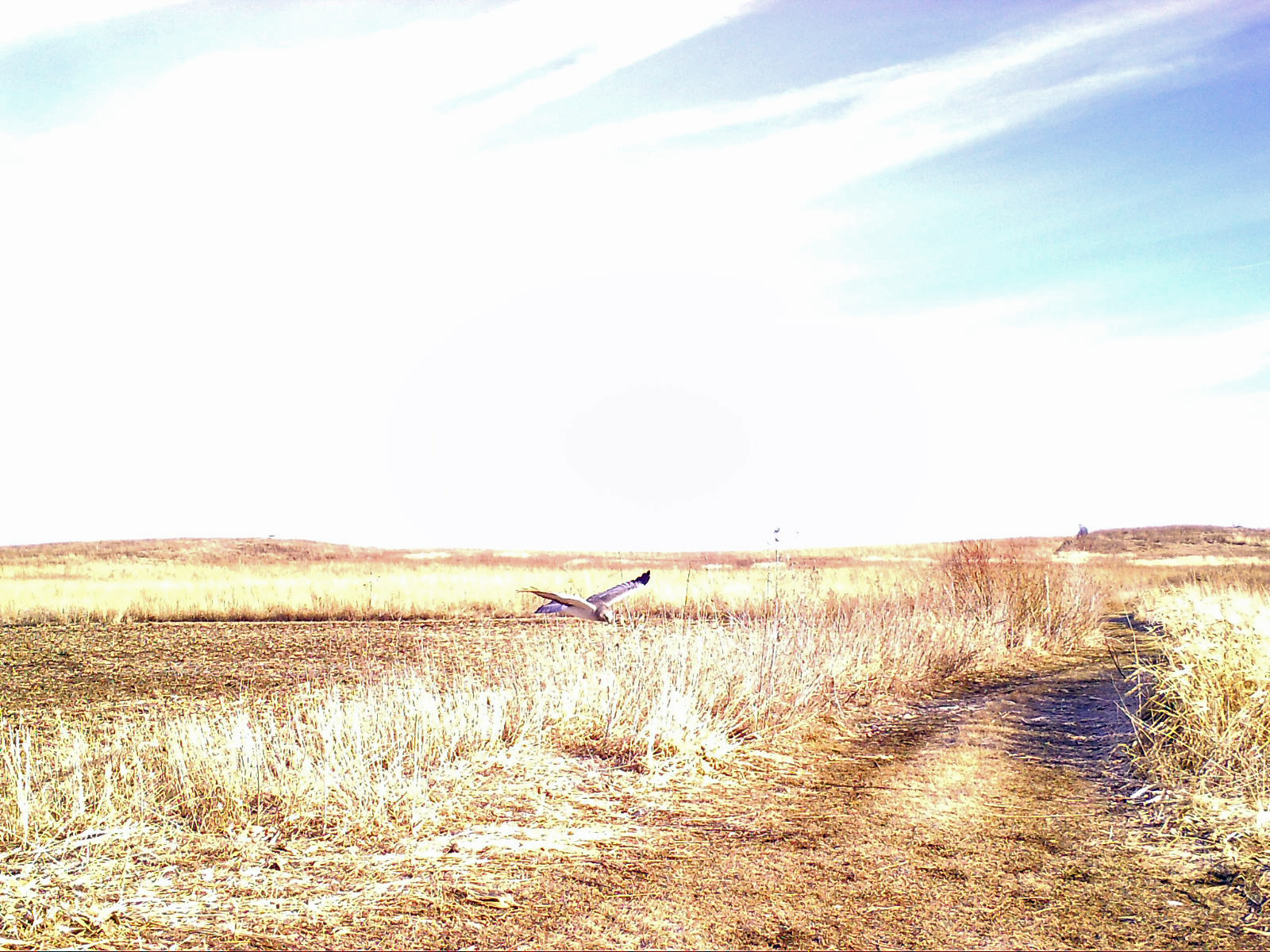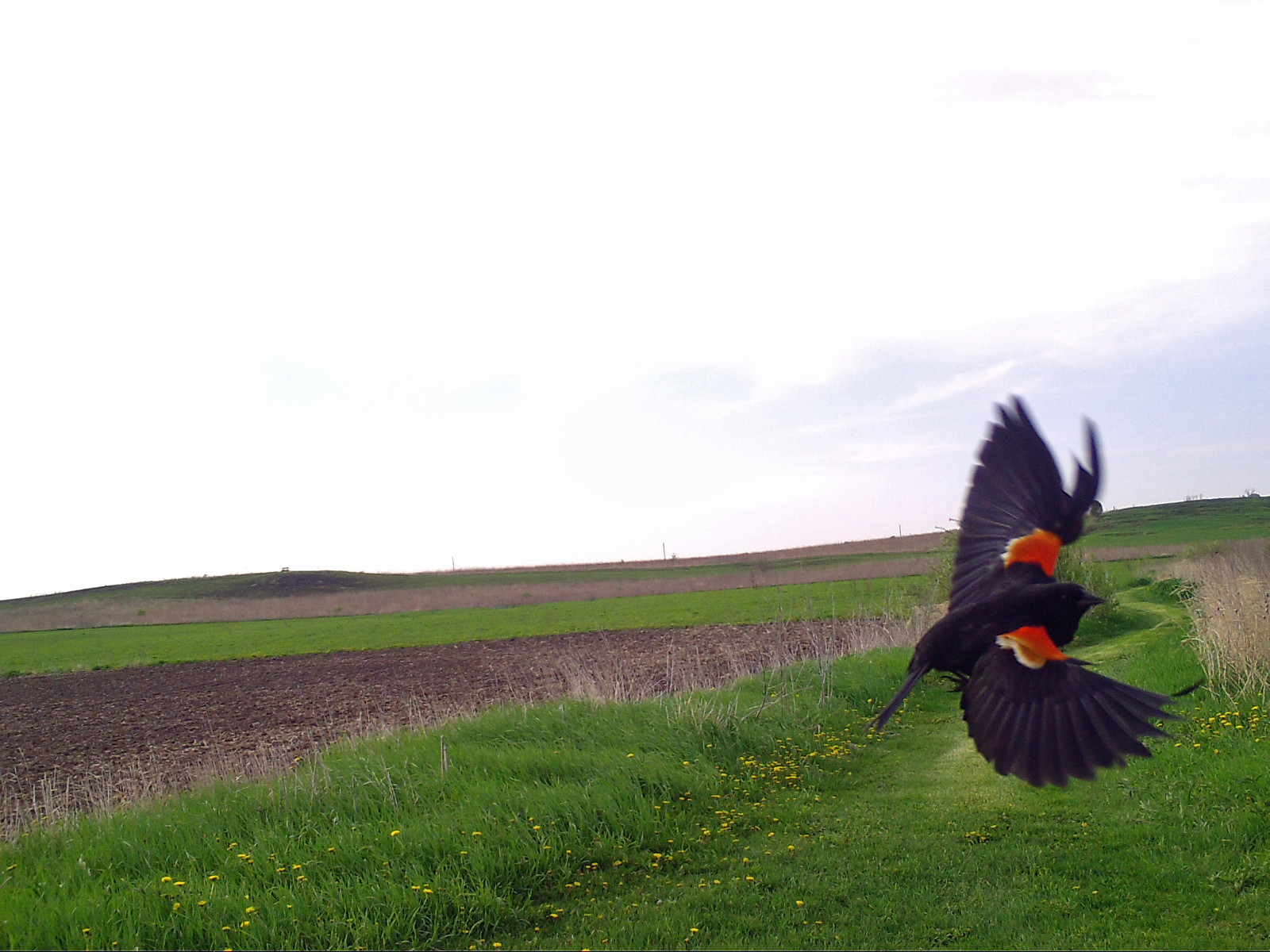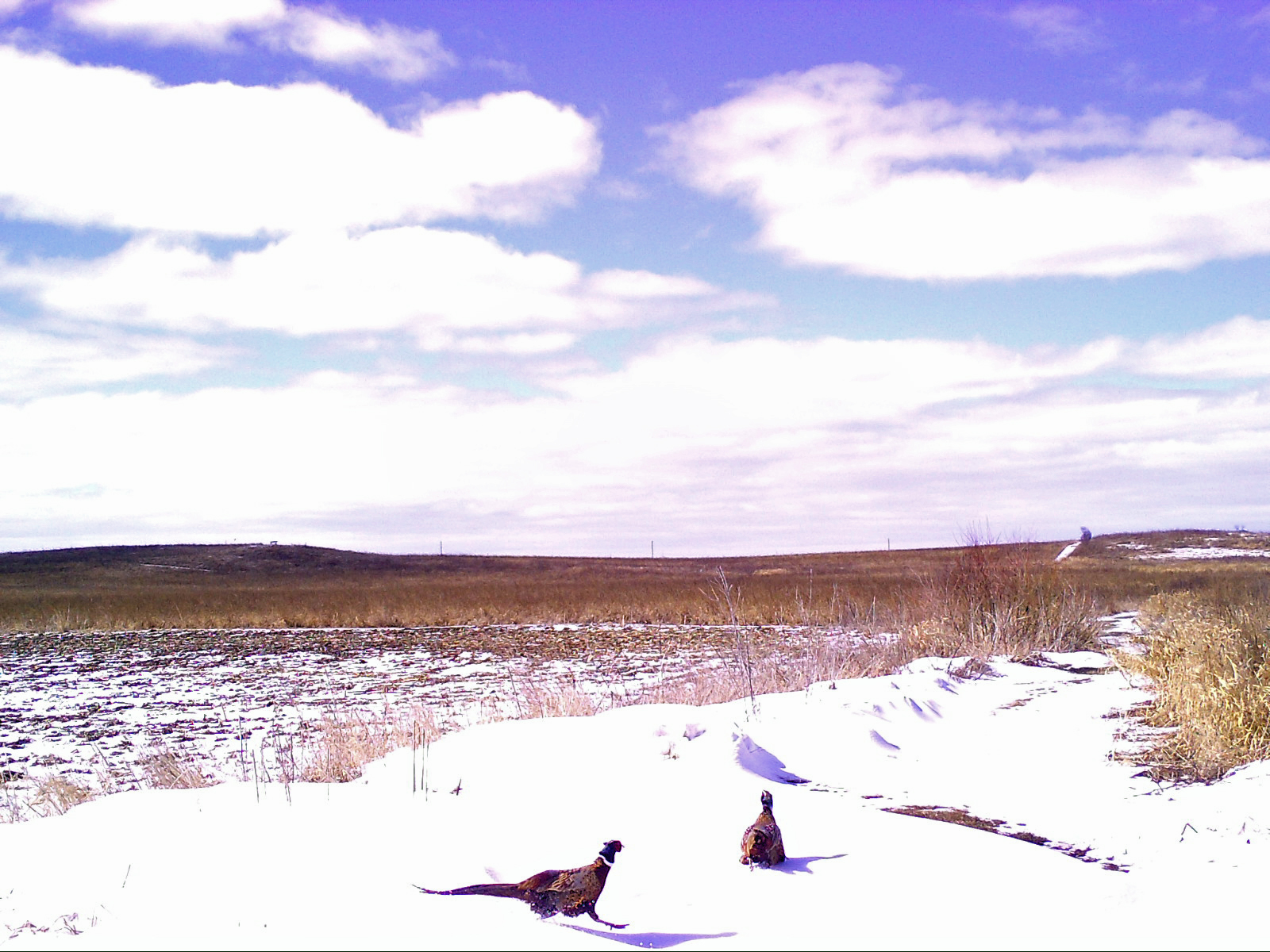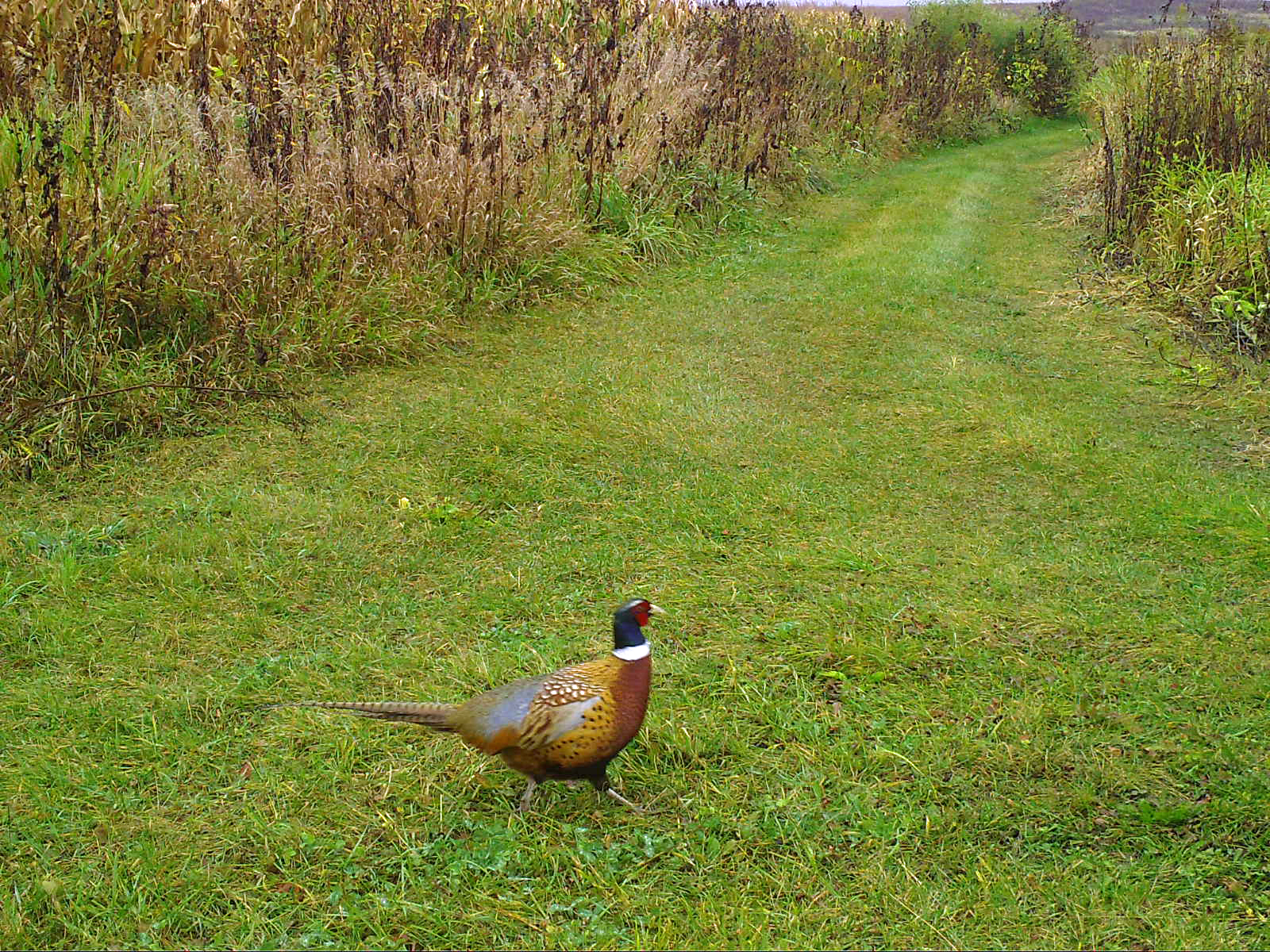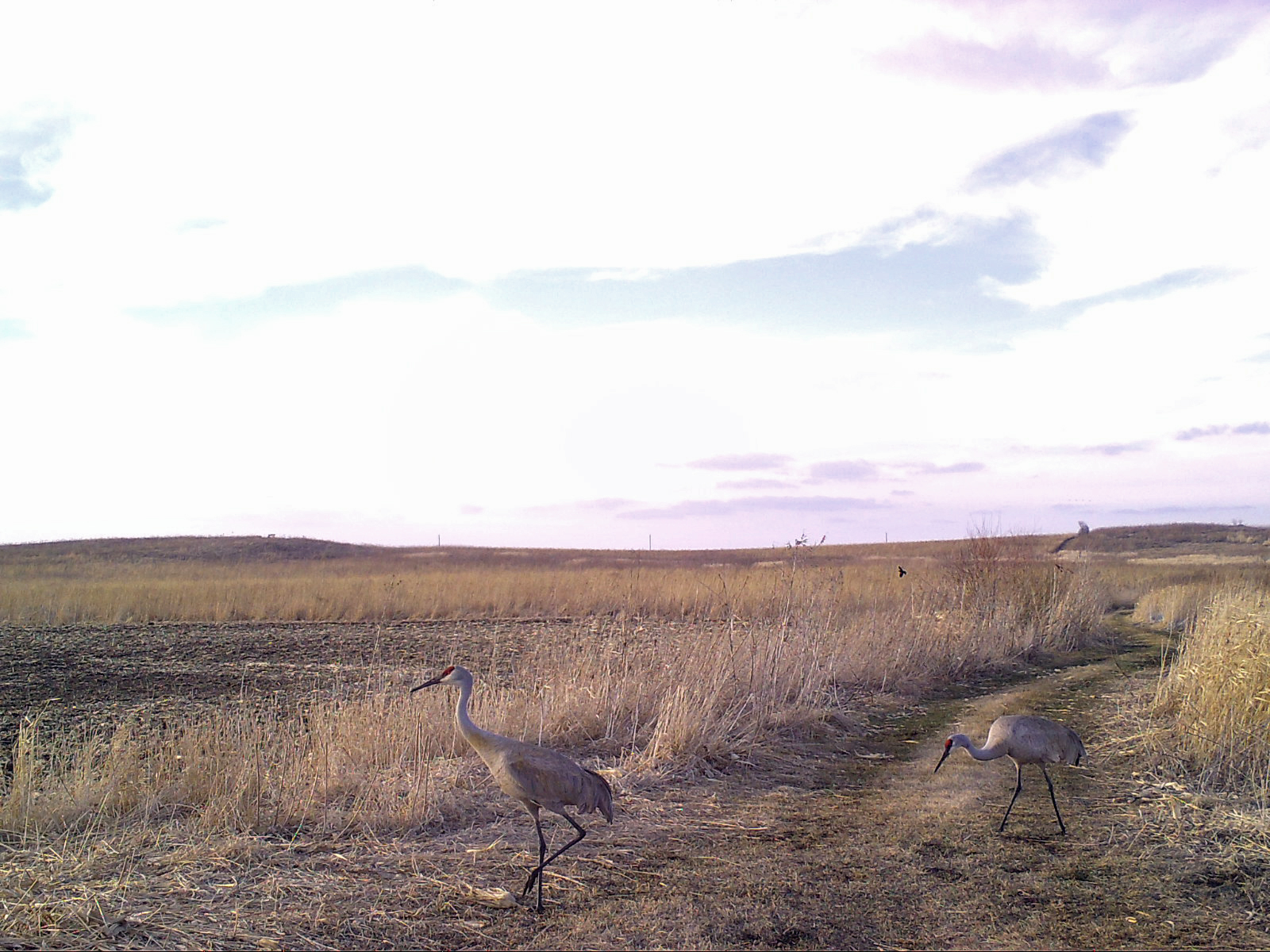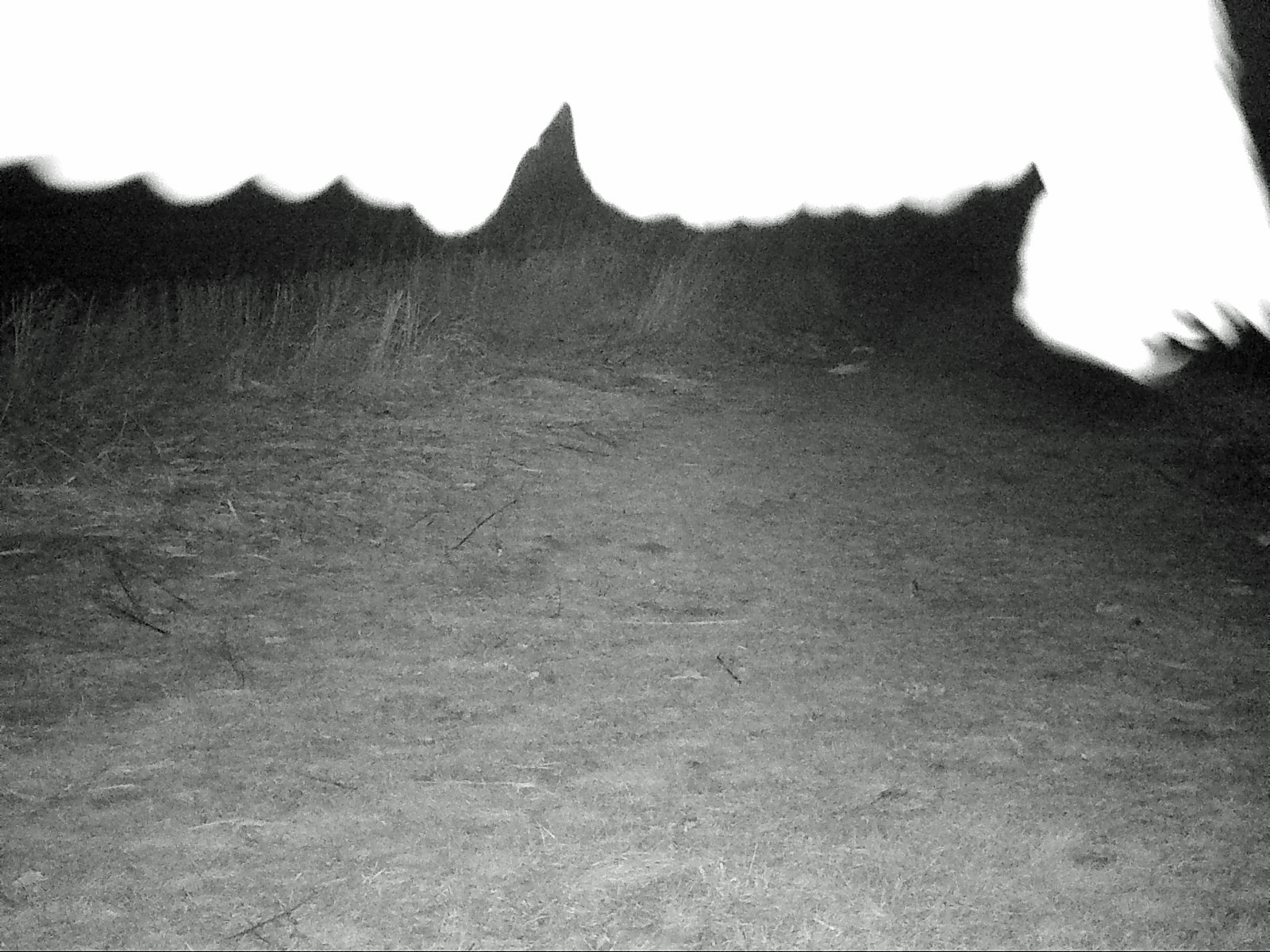Last October, we installed a DNR Project Snapshot wildlife trail camera at Goose Pond Sanctuary as part of a DNR program that includes assisting organizations with their education efforts. Our camera is located south of the Kampen Road residence, where three mowed trails meet adjacent to prairie, cropland and a food plot.
Project Snapshot Camera 01138, sited at Goose Pond Sanctuary. Photo by Mark Martin
When there is motion in front of the camera, a series of three quick-burst shots are taken. On April 5, the camera worked overtime when it took 80 (240 in the series) photos of Canada geese!
We check the camera once a month and use a DNR software program to classify the photos by species and number of individuals. Blank photos (vegetation moving with high winds) and human photos are deleted.
When we installed our camera, we were expecting to document mammals including raccoons, coyotes, red fox, and white-tailed deer (and we do see those! Check out our FFF from December 1, 2017). However, in the second week we were surprised and pleased to capture a photo of a Cooper’s hawk. Eleven species of birds were photographed from October 2017 to September 2018. Three of the most photographed species were ring-necked pheasants, Canada geese, and sandhill cranes (see table).
A comparison of bird species photographed through Project Snapshot at Goose Pond Sanctuary. Table by Graham Steinhauer
Pheasants were photographed (97 series of 3 photos) on 37 days; many of the August photos included a pheasant brood. We were surprised to see the number of brood photos with a rooster in them.
Canada geese were common in spring migration and the camera was sensitive to record geese flying a long distance away.
Sandhill cranes also liked to have their picture taken. Hopefully next year we will have photos of a pair and their colts — usually there is only one pair in this area.
Additional species photographed were red-winged blackbirds (10 days in April and May), northern harriers (9 days in March and April), Cooper’s hawks (5 days in October, November, and August), American robins (5 days in March through May), red-tailed hawks (2 days in February and April), tundra swans (1 day in March), snowy owl (1 in December), and bobolinks (1 day in August).
Click on the photo to advance the slideshow. Photo descriptions: 1 & 2) Canada geese, 3) Cooper’s hawk, 4) Northern harrier, 5) Immature red-tailed hawk, 6) Red-winged blackbird, 7) Pheasant brood, 8) Pheasant roosters establishing territories, 9) Pheasant rooster, 10) Sandhill cranes, 11) Snowy owl. All photos by Project Snapshot Camera 01138.
The raptors, except for the harriers, were photographed as they landed on the post that held the camera. Bobolinks were found feeding in the food plot near the camera.
We look forward to checking the photos and learning what has been photographed. Thanks to the Department of Natural Resources for providing the trail camera.
Written by Mark Martin and Susan Foote-Martin, Goose Pond Sanctuary resident managers
Project Snapshot Information:
Learn more at the Snapshot Wisconsin website: dnr.wi.gov/topic/research/projects/snapshot
Snapshot Wisconsin is a volunteer-based, citizen science project which utilizes a statewide network of trail cameras to monitor wildlife year-round. From coniferous forests to vast prairies, volunteers host trail cameras throughout Wisconsin’s landscapes. The photos of diverse wildlife captured on Snapshot Wisconsin cameras are hosted online, where they can be classified by volunteers across the globe. The resulting dataset is used to inform WDNR management decisions, and help us learn more about Wisconsin’s wildlife.
As of September 2018, 1,019 volunteers monitored 1,264 cameras and that took 24,236,000 photos.
Recently the DNR opened Project Snapshot statewide. Anyone can request a camera if they have 10 acres and as long as there is not another snapshot camera in the same nine square mile block.




